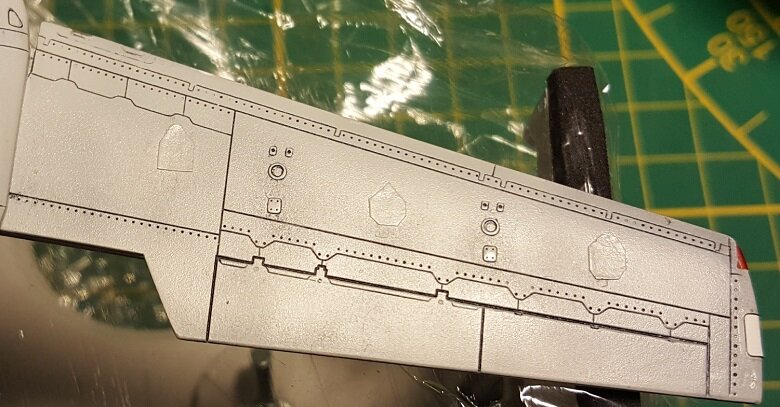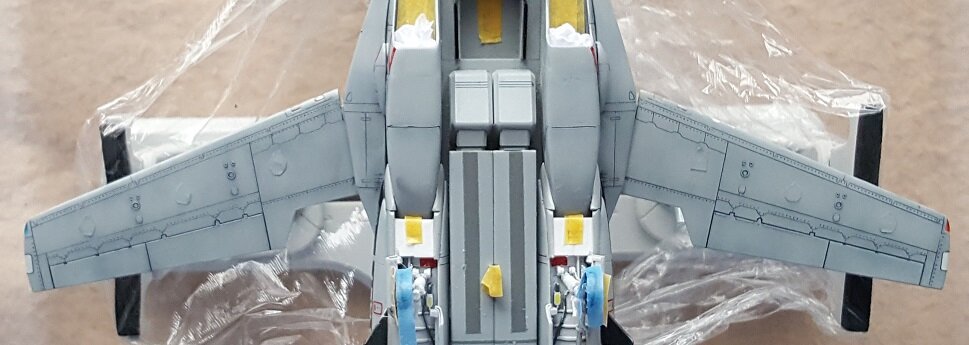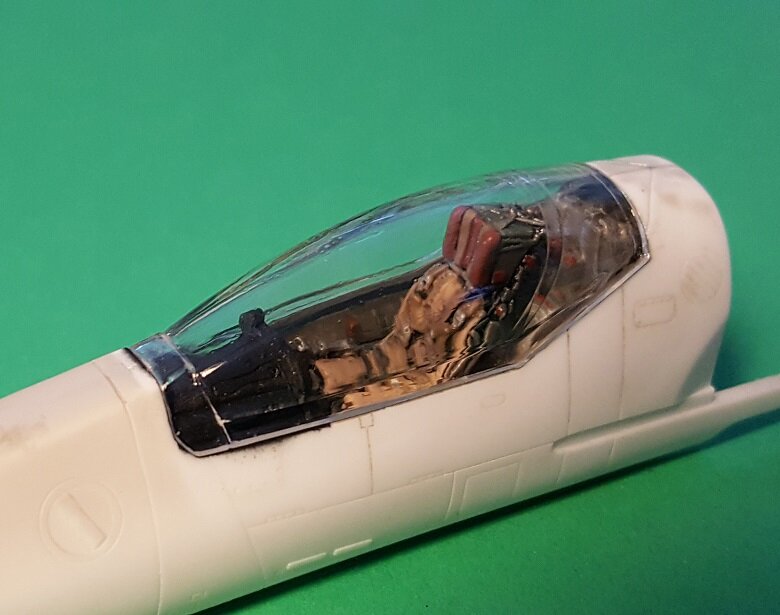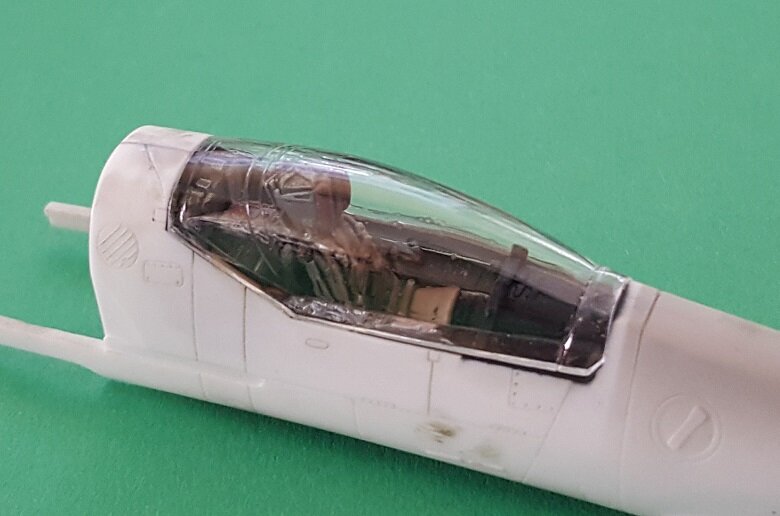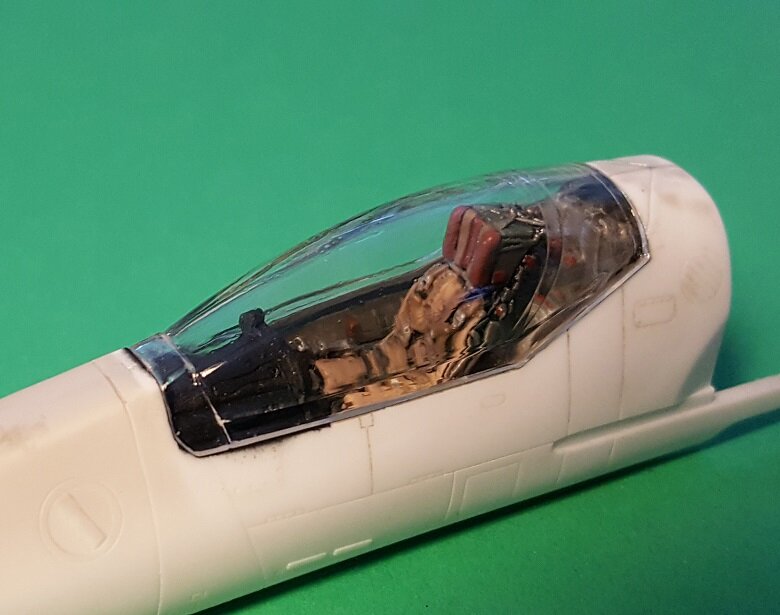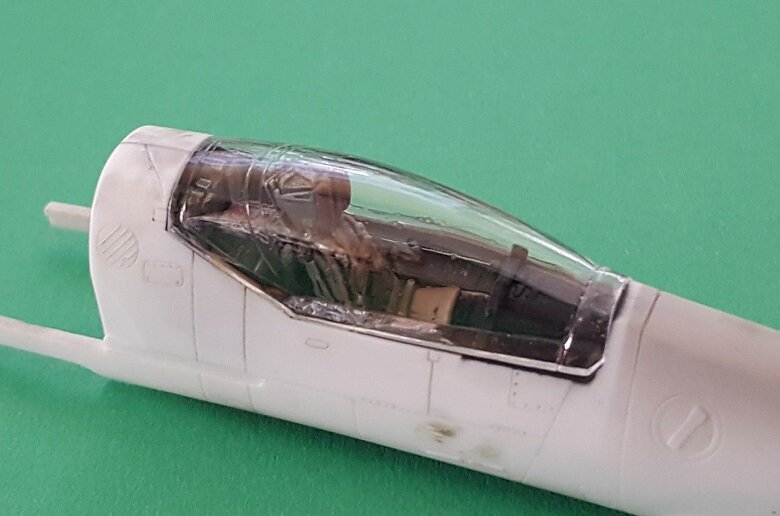

erewhon1872
Members-
Posts
25 -
Joined
-
Last visited
Recent Profile Visitors
1151 profile views
erewhon1872's Achievements

Cannon Fodder (1/15)
7
Reputation
-
I have never tried it but Tamiya do something called 'Smoke' which is a tint, you could try that on a spare piece of transparency and see if you like the look of it? I never use pilot figures and to me, heresy I know, but the seat on a Valkyrie looks more like something you'd recline in rather than be ejected from 😊I used thinned down oil paint for my panel lines and on a light grey finish use dark grey rather than black so they don't stand out so much
-
First time I've ever posted anything so it was odds on I'd make a hash of it! Thanks again 👍
-
I hope these few suggestions are helpful to you, I’m no expert but bitter experience has taught me what is likely to work and what doesn’t work so well!
-
When cleaning up the seams on joints it may be useful to find a putty that you can clean up with water as this can save both time and the need to sand a seam which risks removing surface details. Again this depends on where you are in the world and what’s available near you but I use one called ‘Deluxe Materials Perfect Plastic Putty’ which sets after ten minutes and any excess can be removed with a cotton bud dipped in water. This is particularly useful to fill gaps where wings meet fuselages as those areas are both difficult to sand and very difficult to re-scribe if you wipe out nearby panel lines.
-
thinking about it both of those are 'after' pictures 😊
-
Attached are some before and after pictures on a VF-1 canopy that I removed the seam on, it was my first attempt so while not perfect it is still a lot better than leaving the seam in place I also replaced the kit seat with a resin alternative, it’s an FA-18 seat by ‘Quickboost’. As it is of course not designed for the VF-1 kit it’s a great fit in the cockpit, you just need to take a little material from its base to avoid a clash with the inside of the canopy
-
When painting the canopy remember if you use primer first then the colour of the primer will be the interior colour of the framing, so prime it with the colour of the cockpit interior and then once dry spray over that with the airframe colour or whatever shade is immediately around the canopy as sometimes that is different to the main airframe colour. On the subject of the canopy transparency the one in the YF-19 Hasegawa kit does not have a mould seam down the middle but earlier kits like the VF-1 do have a seam. It can be removed with a new scalpel blade, just scratch away the seam (add masking tape either side of the seam to protect the rest of the canopy) and then sand with successively finer grades of sanding sticks, once reasonably clear again polish with Tamiya Polishing compound or the Mr. Hobby liquid equivalent. This will leave the transparency clear again but to give it a shine I dip the canopy in ‘AK Interactive's Gauzy Glass Coat’, wick off the access on tissue paper and leave to dry in an airtight container to avoid dust settling on the surface as it dries. Other people use ‘Finish’ floor polish for this and no doubt there are other alternatives too.
-
As for priming models if they are available in your part of the world but why not try Mr Hobby’s ‘Mr Primer Surfacer 1000’ thinned 50/50 with either their normal thinner or the levelling thinner but avoid the ‘Aqueous’ thinner as that is for water based paints. I also found this advice online about the distance to keep the tip of the needle away from the surface when spraying the primer………….. ‘The key with these lacquers is to not get too far away. I work from about 0.25 to 1.5 inches away. Spray from too far and it dries before it hits the surface, landing as (near) powder. If the spray isn't shiny when it hits the surface, you're too far away’.
-
ok thanks I'll post the messages again
-
I also replaced the kit seat with a resin alternative, it’s an FA-18 seat by ‘Quickboost’. As it is of course not designed for the VF-1 kit it’s a great fit in the cockpit, you just need to take a little material from its base to avoid a clash with the inside of the canopy
-
Attached are some before and after pictures on a VF-1 canopy that I removed the seam on, it was my first attempt so while not perfect it is still a lot better than leaving the seam in place
-
On the subject of the canopy transparency the one in the YF-19 Hasegawa kit does not have a mould seam down the middle but earlier kits like the VF-1 do have a seam. It can be removed with a new scalpel blade, just scratch away the seam (add masking tape either side of the seam to protect the rest of the canopy) and then sand with successively finer grades of sanding sticks, once reasonably clear again polish with Tamiya Polishing compound or the Mr. Hobby liquid equivalent. This will leave the transparency clear again but to give it a shine I dip the canopy in ‘AK Interactive's Gauzy Glass Coat’, wick off the access on tissue paper and leave to dry in an airtight container to avoid dust settling on the surface as it dries. Other people use ‘Finish’ floor polish for this and no doubt there are other alternatives too.
-
When painting the canopy remember if you use primer first then the colour of the primer will be the interior colour of the framing, so prime it with the colour of the cockpit interior and then once dry spray over that with the airframe colour or whatever shade is immediately around the canopy as sometimes that is different to the main airframe colour.
-
I also found this advice online about the distance to keep the tip of the needle away from the surface when spraying the primer………….. ‘The key with these lacquers is to not get too far away. I work from about 0.25 to 1.5 inches away. Spray from too far and it dries before it hits the surface, landing as (near) powder. If the spray isn't shiny when it hits the surface, you're too far away’.
-
As for priming models if they are available in your part of the world but why not try Mr Hobby’s ‘Mr Primer Surfacer 1000’ thinned 50/50 with either their normal thinner or the levelling thinner but avoid the ‘Aqueous’ thinner as that is for water based paints

